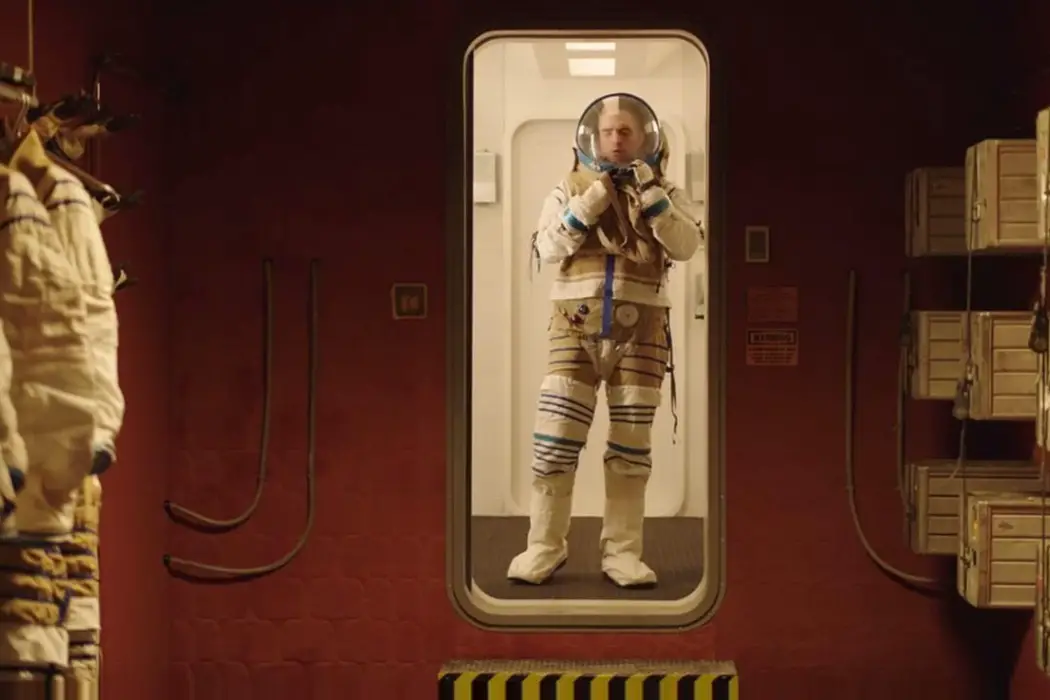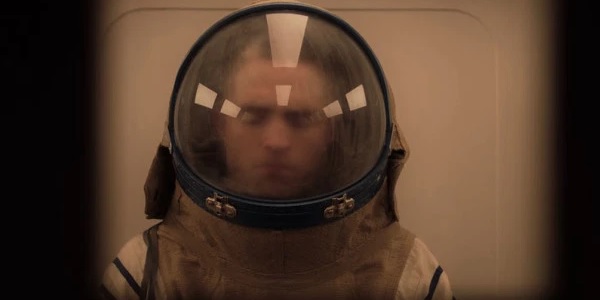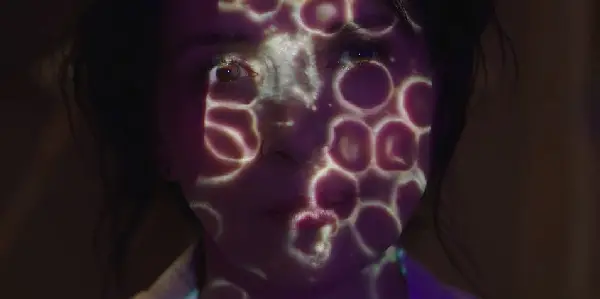HIGH LIFE: Claire Denis Goes Extreme

Ben is a former student of cognitive science who is…
As is common with festival films, many early reviews of High Life may seem inadequate in a few months as more people see it and have time to think about it. I thought it was very good, but that may change or otherwise become complicated as people begin to look at in in ways I haven’t thought of. Nevertheless, I think it’s worthwhile to enumerate some of High Life’s most important elements.
Why? Because High Life is a dense film, and a transgressive one. Regardless of how one evaluates it, it demands consideration of various concepts, the complex array of experiences that unfold from their interactions, and of how the film visually represents things. Carceral punishment, the significance of nature in human life, the effects of manufactured images, sexuality, isolation, the practice of science, bodily fluids – all these things are vital to the film’s plot, but what’s even more remarkable about High Life is how it draws them to extremes.
This is Claire Denis, after all, the director of Trouble Every Day and Bastards, movies that are nothing if not extreme. They’re also films that, with some controversy, have also enjoyed praise from a respectable number of people since their releases. High Life is bigger in scope than these films, which hopefully will be something that helps it stand the test of time.
Lost Time
High Life takes place on a spaceship traveling at near the speed of light, trillions of miles from Earth. It houses a crew of death-row inmates who have been recruited for a deep space mission to investigate a black hole. Robert Pattinson stars as Monte, the inmate who serves as our main character. At the beginning of the film, only he and a baby girl are aboard the ship. The scenes in which only he and this girl appear bookend the film.
The film consists mostly of flashbacks showing where the rest of the crew went and where the baby came from. Interestingly, the flashbacks are presented to us from an independent perspective, depicting past events objectively rather than through Monte’s memories. The film does depict his memories, but not in an expository way: we see them as fleeting images that intrude on his experience, not truths of the past but a fact of his life. They are more about why the past is relevant, while the flashbacks are more about explaining the past.

Indeed, the film seems organized by relevance. The reason we start with Monte and the baby is simply because they’re the most important elements of the film, and we see the effects of Monte’s memories before we begin to properly see into the past. As the whole story becomes clear to us, we only learn details of the characters’ backgrounds when they become interpersonally relevant.
The relevance of the past is emphasized, and even the entries we make into Monte’s perspective serve the objective depiction of that relevance, the illustration of how human relations extend across time. This offers us another angle from which we can look at the events that play out between the characters: humans, even at the limits of where technology can take us, are still preoccupied with Earth’s ecosystem and other humans. (High Life focuses heavily on the sexual aspect of this.) It’s all we know, and High Life endeavors to show us a confrontation between that and things as truly alien as interstellar space and black holes.
Incarcerating Images
But this confrontation isn’t the only conflict in the film. The other one is founded on a less heady, more worldly concept: being a prisoner. Every character in the film is a prisoner at work. None of them were exactly forced into it, but they didn’t have many other options either. Their mission, we know from early on in the film, is effectively a suicide mission: they’re never returning to Earth, even if they survive their encounter with the black hole.
The authority on the ship is Dr. Dibs (Juliette Binoche), who is also a death-row inmate, but has access to drugs she can use to control the others. She’s also, presumably, the only competent medical practitioner. Trouble is, she’s not so competent as a leader. She manipulates the other prisoners and torments some of them. And, to borrow a euphemism from Dr. Strangelove, she steals their precious bodily fluids.

Aside from drugs and life support, there’s another thing rationed on the ship: images from Earth. Every now and then, random images are played for the spaceship’s crew. Sporting events, old films, brief videos of nature. Excerpts of life on Earth. These images are one of the first things introduced in the film, but it’s perhaps not until near the end that it becomes clear just how important they really are to the people aboard the ship.
The spaceship and its crew are isolated beyond imagination. On top of that, it’s a carceral spaceship: no one on board really has any control over their own lives. The images of life are like the drugs and the ship’s life support systems: they’re units of something people need, distributed by rationing just enough to keep everyone starved, but alive. They need water. They need medicine. They need to have some connection to the world outside their spaceship, which is isolated beyond imagination. All these needs are turned against them to send them into the void forever.
It doesn’t seem like a good way to do science or enact justice. Here, High Life seems almost to be inviting criticism, showing us how the manufacture and organized display of images can be used to manipulate.
High Life, Low Concept
Many topics are at play in High Life, some more abstract than others, and none is particularly foregrounded. The film’s form brings them together, but not in a way that emphasizes any one characters’ feelings about the scenario. Its violence and sexuality will surely be, and have been, shocking and uncomfortable for some viewers. It’s a thought-provoking film, but I’ve never been one to think that alone is a good reason to think a movie is successful – a person could weigh everything High Life puts on the table and come away thinking it was a failure. There would still be a lot to weigh.
Again, though, I do think High Life is a success, and a creative one at that. And while a film being thought-provoking may not be a good enough standard by which to evaluate it, it is, perhaps, a good enough reason to go see it.
High Life premiered at the Toronto International Film Festival on September 9, 2018. It will screen at the New York International Film Festival on October 2, 2018.
Does content like this matter to you?
Become a Member and support film journalism. Unlock access to all of Film Inquiry`s great articles. Join a community of like-minded readers who are passionate about cinema - get access to our private members Network, give back to independent filmmakers, and more.
Ben is a former student of cognitive science who is currently trying to improve his writing style and ability to understand and appreciate films containing unfamiliar perspectives. He tries not to hold films to a strict set of criteria, but does believe that strong movies can change your outlook on the world. His favorite films include Whisper of the Heart, Hellzapoppin', Foolish Wives, 42nd Street, and the work of Charlie Chaplin.













